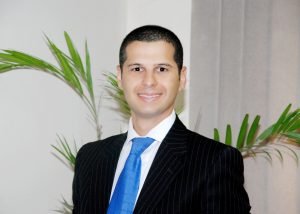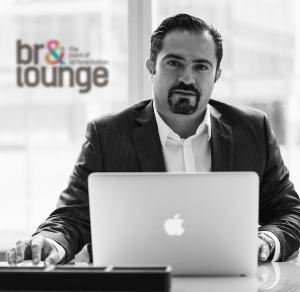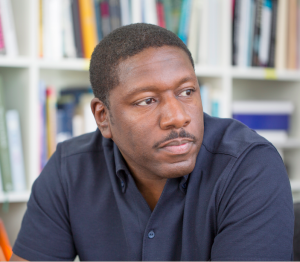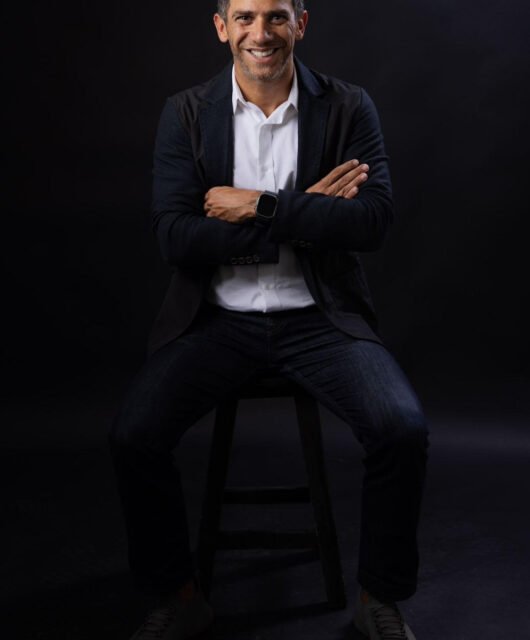Airline branding represents an instrumental brand tactic to present a country’s identity on a global juncture. With 2018 World Cup fever beginning to take the world by storm, Egypt Air, Egypt’s national airline brand, has just revealed a customized livery inspired by the event. Creatives and Strategists from Superunion, Landor, Interbrand and Brand Lounge have reviewed the Egypt Air’s branded livery for The Brandberries.
Ambrish Chaudhry – Head of Strategy for Asia at Superunion
 When it comes to sports, it’s great to wear your heart on your sleeve. Egypt Air seems to have taken the advice literally with their new livery. While this is great to engage with the fans, they probably had an opportunity to brand this better. Having the various sponsors in the livery makes this feel more of a promotion activity rather than an alignment with the nation’s passion. While it’s important to work with sponsors; perhaps limiting the number to one or two partnerships that also go beyond livery could have been more effective. However kudos for Egypt Air for marking the moment.
When it comes to sports, it’s great to wear your heart on your sleeve. Egypt Air seems to have taken the advice literally with their new livery. While this is great to engage with the fans, they probably had an opportunity to brand this better. Having the various sponsors in the livery makes this feel more of a promotion activity rather than an alignment with the nation’s passion. While it’s important to work with sponsors; perhaps limiting the number to one or two partnerships that also go beyond livery could have been more effective. However kudos for Egypt Air for marking the moment.
David Cano – Creative Director at Interbrand Madrid
 Undoubtedly, the brand leverages a unique moment to associate with a whole country that will be committed to the national football team. So, in this sense, it’s a safe movement – country brand associated with a national team. ROI is expected to be high, due to media impacts and, seems so, the additional “impressive arrangements” that the company has prepared beforehand.
Undoubtedly, the brand leverages a unique moment to associate with a whole country that will be committed to the national football team. So, in this sense, it’s a safe movement – country brand associated with a national team. ROI is expected to be high, due to media impacts and, seems so, the additional “impressive arrangements” that the company has prepared beforehand.
However, from a creative point of view, it seems that the idiosyncrasy of the aircraft as an object has not been taken into account. An aircraft is not exactly a blank page: it’s a 3D design. On the other hand, the vehicle has not been observed as an element of representation but as a billboard: the windows cut out the face of the national team’s coach, the sponsor’s logos could have been better displayed… In fact, one would discover the “Plane of the Pharaohs” sphinx after several views, because it’s almost invisible among all the layers of players, logos and color changes.
A lost opportunity to make something iconic, as the Egyptian culture is almost endless in its heritage.
 Ehab Nada – Managing Director at Super Union North Africa
Ehab Nada – Managing Director at Super Union North Africa
From a strategy perspective, I think it is a good idea, gets behind the team, supports a lot of public sentiment, builds the nation’s sense of ability and pride. From a creative perspective, I think it could have been much better. The artwork is too busy, too much is happening … players running all over the place, the logos of sponsors clutter the scene, the Horus brand has completely disappeared, the purple back-drop is too over-shadowing. The elements are not neatly laid-out, for example I would’ve put the flag on the tail not front of the aircraft/cockpit for maximum visibility, since the aircraft nose is usually hidden behind or under the tube at airports and the tail is what stands in pride visible from any place inside the airport. Finally, I would not have used any person (players/manager), what happens if any of them are unable to join the squad?
Hasan Fadlallah – Founder and CEO at Brand Lounge
 Visual Identity has a strong impact in building the image of a brand. The elements of visual identity, if well created, communicate with its targeted audience in the way that enables emotional bonding. Visual identity of a national airline company is of great importance for its recognition in the market, but at the same time for promoting different values of a country it represents. It is defined as a system of recognizable and consistent visual presentations of a company based on which market recognition is achieved.
Visual Identity has a strong impact in building the image of a brand. The elements of visual identity, if well created, communicate with its targeted audience in the way that enables emotional bonding. Visual identity of a national airline company is of great importance for its recognition in the market, but at the same time for promoting different values of a country it represents. It is defined as a system of recognizable and consistent visual presentations of a company based on which market recognition is achieved.
Nation-states have historically used various forms of persuasion to advance their political, economic, and cultural agendas. Nation branding programs can be directed at both domestic and international audiences, as it seeks to reconstitute nations both at the levels of ideology and experience of the reality of nationhood.
Although national identity differs from corporate identity, in the case of Egypt Air’s FIFA World Cup 2018 branding there is a thin line between the 2 theories; as Egypt Air is a national carrier despite its commercial mandate. As an Egyptian ambassador to the world, it is expected that the airline would act as a «bridge to the world» to connect people and cultures together, and project the positive attributes and attractions of Egypt . This has not been visually translated on the design level. Mohamad Salah is an Egyptian treasure and an inspiring international football player, hence it should not come as a surprise to see him widely positioned and visually portrayed in the design of Egypt Air’s latest FIFA world cup 2018 branding, yet the remaining design elements and messages could have better projected Egypt and promoted its touristic attractions and amplified its positive image to the world instead of turning it into a prominent commercial space for advertisers to flaunt their logos.
Paul Cardwell – Executive Creative Director at Superunion London
 Airlines have to continuously look for new ways to connect with their audiences. They fly the same planes on the same routes and they have to find ways to be different. Connecting with big events in one way to do it. In this case some people have criticized the airline for allowing another brand to take over their aircraft.
Airlines have to continuously look for new ways to connect with their audiences. They fly the same planes on the same routes and they have to find ways to be different. Connecting with big events in one way to do it. In this case some people have criticized the airline for allowing another brand to take over their aircraft.
They are wrong. People are not stupid. There is absolutely no doubt whose aircraft it is. And the airline have found someone who will pay to decorate it to celebrate the football tournament.It’s a very clever move. A classic win-win situation. Both brands benefit. And the airline gets handsomely paid and also benefits from association with the huge event.
Shaun Loftman – Executive Creative Director at Landor Central and Eastern Europe, the Middle East, and Africa (CEEMEA)
 Airline branding provides a formidable way to present a country’s identity on a global stage. With 2018 World Cup fever beginning to grip the globe, Egypt Air, Egypt’s national carrier, has just revealed a customized aircraft livery inspired by the event—and by Egypt itself. Rather than taking the discreet route, Egypt Air has emblazoned its national flag colors boldly across the front cabin. The prominence of Mo Salah, Liverpool Football Club’s goal machine and native Egyptian, furthers the livery’s nationalism. Captured in rapturous mid-celebration after scoring yet another goal, Salah takes pride of place at the front of the design.
Airline branding provides a formidable way to present a country’s identity on a global stage. With 2018 World Cup fever beginning to grip the globe, Egypt Air, Egypt’s national carrier, has just revealed a customized aircraft livery inspired by the event—and by Egypt itself. Rather than taking the discreet route, Egypt Air has emblazoned its national flag colors boldly across the front cabin. The prominence of Mo Salah, Liverpool Football Club’s goal machine and native Egyptian, furthers the livery’s nationalism. Captured in rapturous mid-celebration after scoring yet another goal, Salah takes pride of place at the front of the design.
Egypt Air’s livery is an amazing way to convey the potential and sporting ambition of the Egyptian people. In addition to the national colours of red, white, and black, a wash of vibrant purple has been incorporated as a backdrop to other team members. It will undoubtedly catch the attention of travellers and sports fans alike when Egypt Air rolls onto international runways around the world. The opportunity to integrate with the World Cup arises only every four years, so you can see why the Egyptian authorities have seized the opportunity to launch such an impactful statement.
 Tim Simmons – Executive Creative Director at Superunion Madrid
Tim Simmons – Executive Creative Director at Superunion Madrid
This is a great idea and I like the ‘making of’ video, but I question the execution. Unfortunately it seems like a missed opportunity for the country brand and there doesn’t seem to be an integrated communication effort. It looks more like a single ad to promote a match versus the national significance of being part of the World Cup.
I miss ‘togetherness, unity and national identity’. For example separating the star player from the key players goes against a team effort. And placing sponsors in the most prominent area of the plane reminds me of how sometimes brands dominate players uniforms with little sensitivity for the fans and the game. Also the size of the We logo and the prominent use of the color purple implies that Telecom Egypt had some influence over the creative direction.
It’s a shame they weren’t able to include any FIFA 2018 event branding,
—





